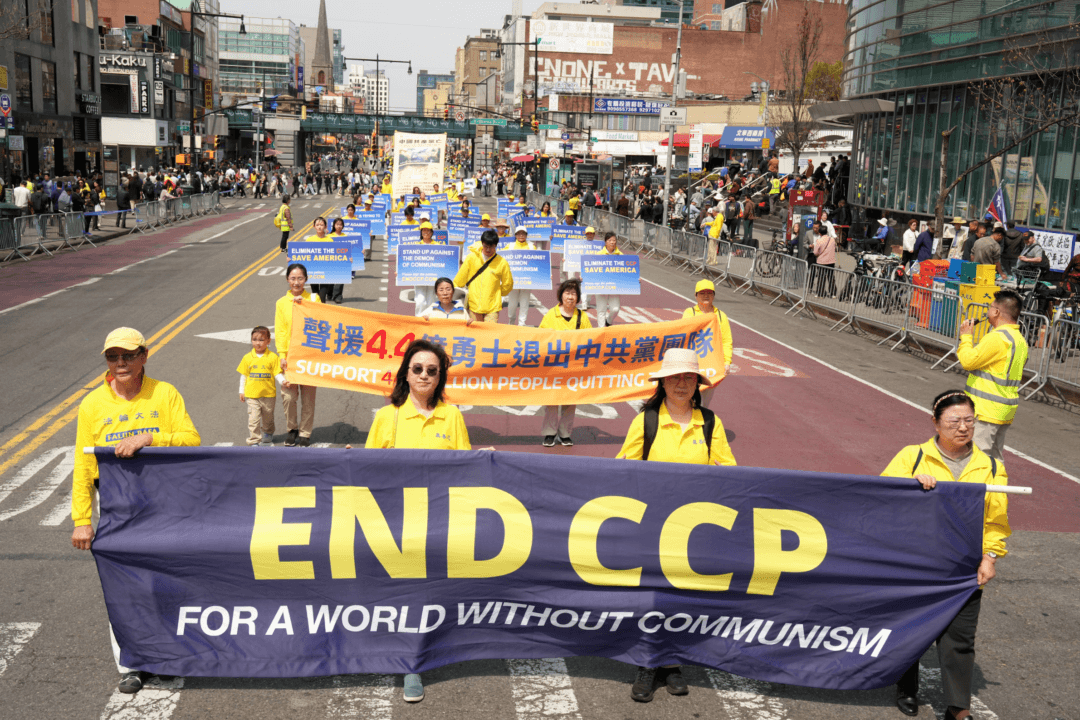Former Deutsche Bank risk management officer Nicholas Haigh took the witness stand on Wednesday, testifying on the Statements of Financial Condition (SFC) at the center of a civil fraud case against former President Donald Trump.
Last September, New York Attorney General Letitia James sued the former president for defrauding the state by artificially inflating his net worth in order to obtain more favorable terms from banks and insurers.
She argued that he inflated his net worth by anywhere between $812 million and $2.2 billion each year on his SFCs between 2011 and 2021, and New York Supreme Court Judge Arthur Engoron ruled in a pretrial summary judgment on Sept. 26 that President Trump was liable for fraud and had inflated his net worth.
SFCs Key to Loans
Deutsche Bank had loaned Trump Organization $125 million for a golf resort in Doral, Florida, and $107 million in 2012 for a hotel and condo skyscraper in Chicago.On Wednesday, Mr. Haigh said the SFCs President Trump submitted were key to the loan approvals.
He said he had no reason to doubt the SFCs at the time, and “assumed that the representations of the assets and liabilities were broadly accurate.”
President Trump had acted as a guarantor in those loans, and the bank required that he maintain a net worth of at least $2.5 billion. He also put up a Miami resort and another Chicago skyscraper as collateral.
The bank would not have approved loans without a “strong financial guarantee,” Mr. Haigh said, which seemed to contrast with the prosecutors’ arguments that banks took undue risks because of President Trump’s SFCs.
“As the ultimate decider, I needed to be comfortable with the terms of the loan, including the covenants that protected the bank,” he said.
Bank Did Analyses
Two accountants who prepared the Trump Organization SFCs had already testified the first week, saying they relied on numbers given by organization executives, and did not independently audit or calculate them.The prosecutors have been making the case that Trump Organization executives, including President Trump, were solely responsible for fraud.
This Tuesday, former Trump Organization CFO Allen Weisselberg took to the witness stand. Prosecutors focused on the square footage of the Trump Tower triplex penthouse, which was famously subject to a Forbes article that pointed out President Trump had quoted three times the square footage than the floor plans show. The same tripled figure appeared on SFCs, which prosecutors argue was evidence Mr. Weisselberg knew false information appeared on the SFCs.
Mr. Weisselberg said that any differences between the SFC figures and other appraisals were negligible, and not something he thought worth flagging with outside accountants.
“It was a little bit of a marketing piece for banks to read about our properties, how well they’re taken care of, that they’re first-class properties,” he said.
President Trump has repeatedly argued that his statements included a disclaimer that asked insurers and banks to conduct their own analyses, and they had the staff to do it. Prosecutors have pointed out that the statute they are using does not require a victim, and his inflating numbers would be a crime whether or not the banks and insurers did their own analyses.
Mr. Haigh, who headed the bank’s private wealth management risk group from 2008 to 2018, said that the bank did not conduct full appraisals of the properties. Those numbers submitted did help him secure bigger loans with lower interest, he said.
But, he added, they sometimes gave sizable “haircuts” to the valuations on properties including the golf course, and Trump Tower.
“I think the phrase we used might have been ‘sanity checks’ on the numbers,” he said.
While the 2011 SFC listed a $$4.3 billion net worth figure, Deutsche Bank made its own estimate of $2.4 billion in its own reports.
These internal credit reports also reduced the value of yet-to-be-developed properties by 75 percent, because of “the uncertainty in valuing undeveloped land.”







